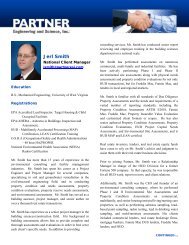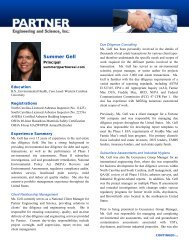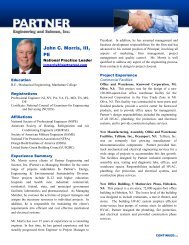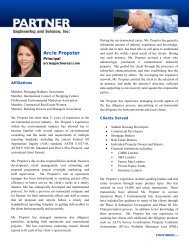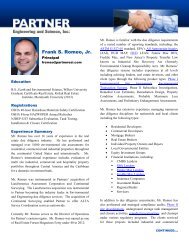Use of California Human Health Screening Levels (CHHSLs) in ...
Use of California Human Health Screening Levels (CHHSLs) in ...
Use of California Human Health Screening Levels (CHHSLs) in ...
Create successful ePaper yourself
Turn your PDF publications into a flip-book with our unique Google optimized e-Paper software.
esources even though direct exposure to the soils does not pose a significanthealth risk. S<strong>in</strong>ce the <strong>CHHSLs</strong> do not address impacts to groundwater, surfacewater or sediment, these and other potential environmental concerns should beaddressed as part <strong>of</strong> a comprehensive environmental risk assessment.2.4 <strong>Screen<strong>in</strong>g</strong> For Soil Direct-Exposure ConcernsThe soil screen<strong>in</strong>g levels presented <strong>in</strong> Table 1 address potential exposure <strong>of</strong>humans to contam<strong>in</strong>ants <strong>in</strong> soil through <strong>in</strong>cidental soil <strong>in</strong>gestion, dermalabsorption and <strong>in</strong>halation <strong>of</strong> dust or vapors <strong>in</strong> outdoor air. These soil screen<strong>in</strong>glevels are given <strong>in</strong> milligrams (mg) <strong>of</strong> chemical per kilogram (kg) <strong>of</strong> dry soil.Therefore, the analytical laboratory must be <strong>in</strong>structed to report their resultsaccord<strong>in</strong>gly. Models and assumptions used to develop the soil <strong>CHHSLs</strong> aresummarized <strong>in</strong> Appendix 1. The <strong>CHHSLs</strong> represent a comb<strong>in</strong>ation <strong>of</strong> standardassumptions regard<strong>in</strong>g exposure <strong>of</strong> residents and workers to contam<strong>in</strong>ants <strong>in</strong> soiland outdoor air and toxicity factors for each <strong>of</strong> the specific chemicals listed.<strong>CHHSLs</strong> for chemicals that are known or suspected carc<strong>in</strong>ogens were calculatedus<strong>in</strong>g a target excess lifetime cancer risk <strong>of</strong> one-<strong>in</strong>-one-million (10 -6 ). A targethazard quotient <strong>of</strong> 1.0 was used to calculate CHHSLS for noncancer healtheffects.The presence <strong>of</strong> a chemical <strong>in</strong> soil at concentrations below its correspond<strong>in</strong>gCHHSL can be assumed to not pose a significant health risk to people who maylive or work at the site. S<strong>in</strong>ce sites usually have multiple contam<strong>in</strong>ants, thecumulative, or total risk and hazards posed by all the hazardous chemicals a siteshould also be estimated us<strong>in</strong>g the approach described <strong>in</strong> Section 2.8.Residential and commercial/<strong>in</strong>dustrial soil <strong>CHHSLs</strong> are applicable to soils that areat the ground surface or could be brought to the ground surface at some time <strong>in</strong>the future, with subsequent potential exposure by human receptors. A depth <strong>of</strong>more than three meters (approximately 10 feet) is generally used to del<strong>in</strong>eate"deep" soils that are likely to rema<strong>in</strong> isolated <strong>in</strong> the subsurface versus "shallow"soils that may be exposed dur<strong>in</strong>g future redevelopment activities (Cal/EPA1996a). Exposure <strong>of</strong> workers to deeper soils could still occur dur<strong>in</strong>g periodicconstruction and utility ma<strong>in</strong>tenance work. Even if deep soil contam<strong>in</strong>ation doesnot present a human health risk, the oversee<strong>in</strong>g regulatory agency may requirepreparation <strong>of</strong> a formal land-use covenant <strong>in</strong> order to allow such contam<strong>in</strong>ation torema<strong>in</strong> on site.January 20052-6CHHSLS



